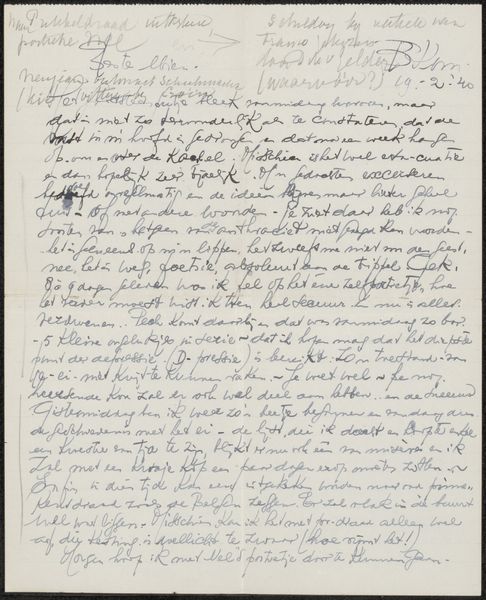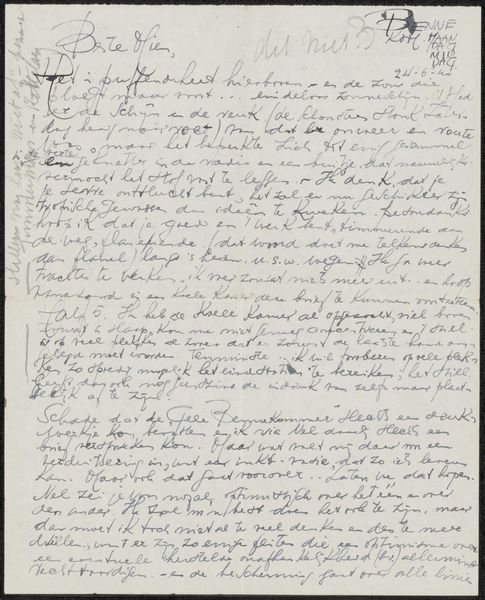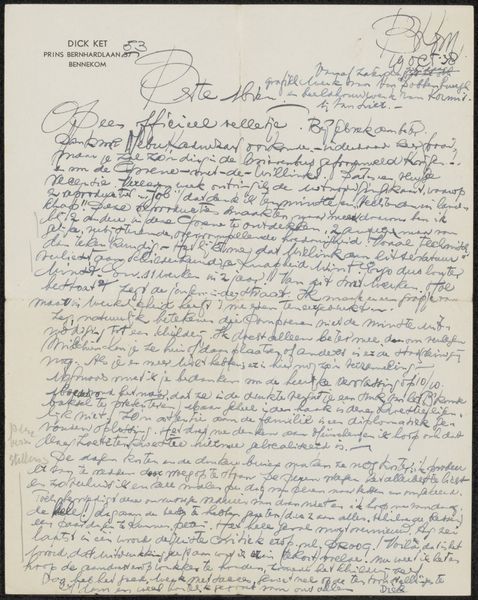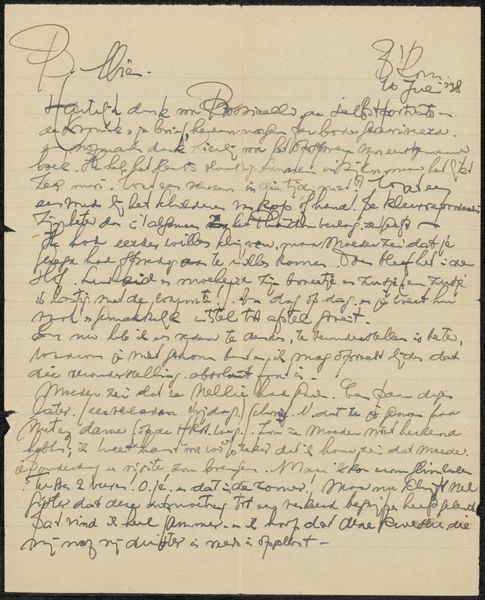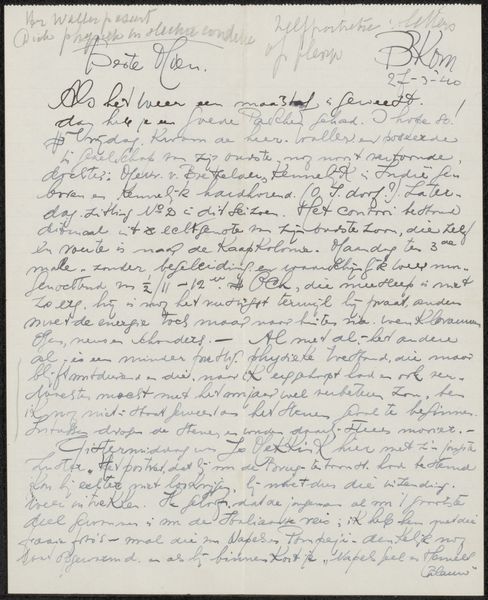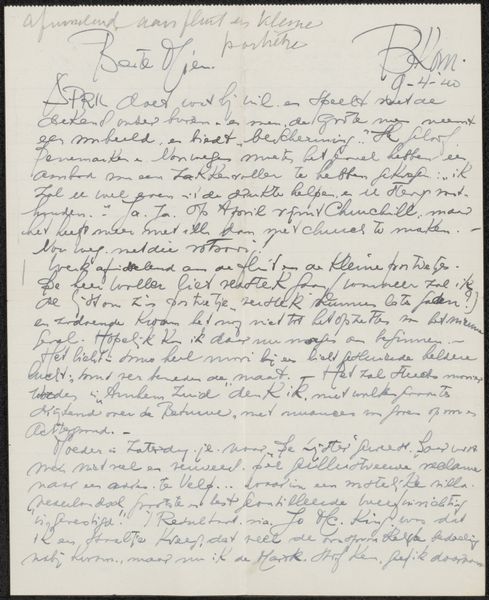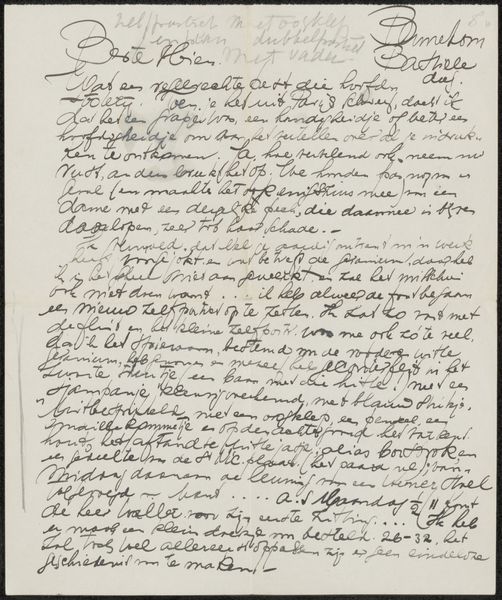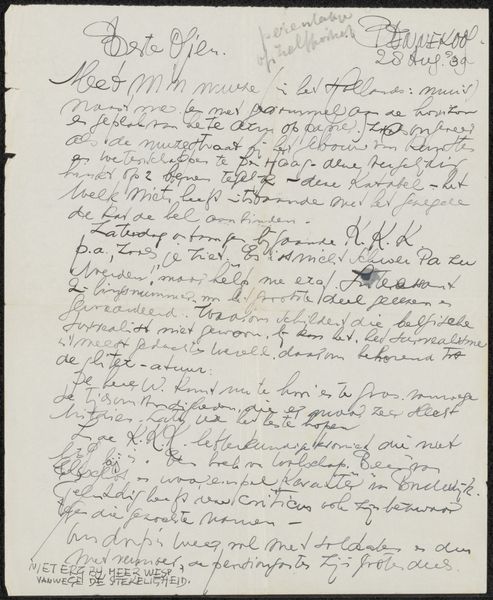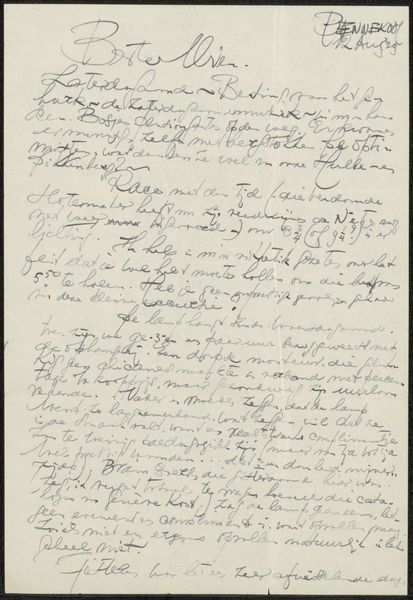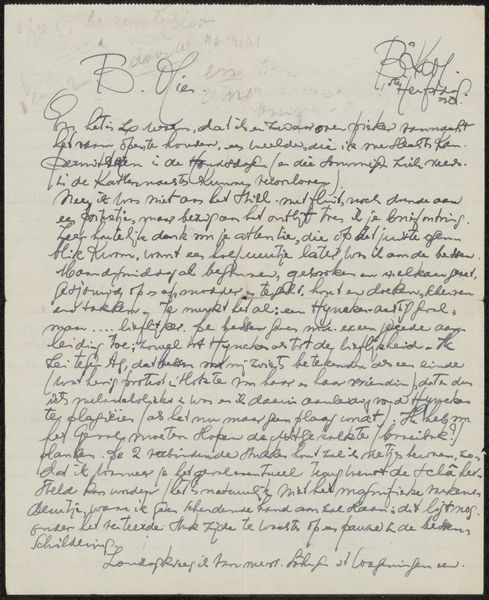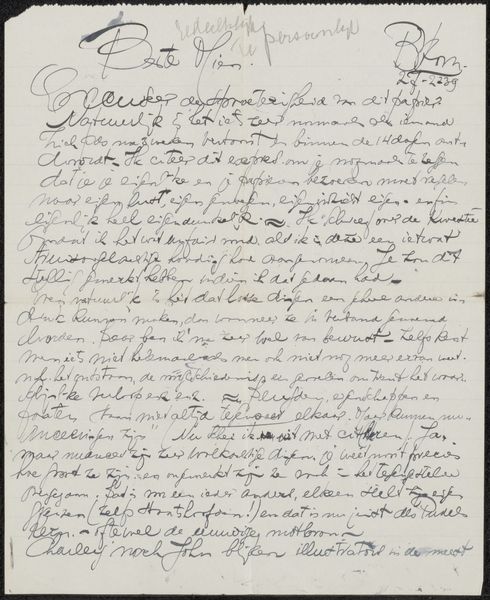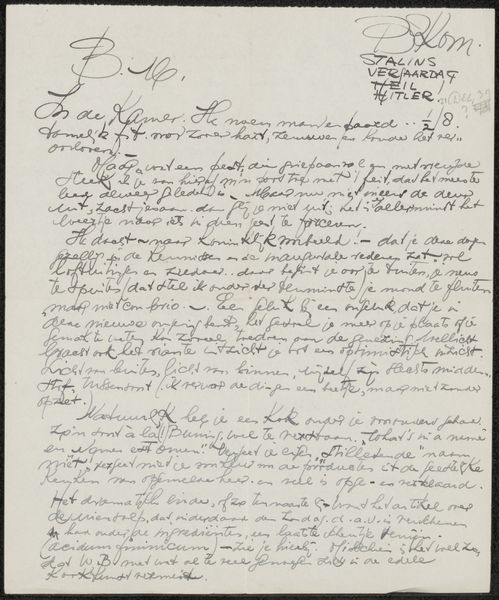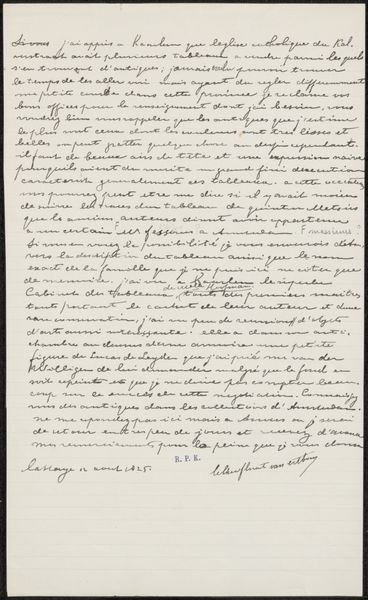
drawing, paper, ink
#
drawing
#
paper
#
ink
Copyright: Rijks Museum: Open Domain
Curator: Let's pause for a moment and consider "Brief aan Mien Cambier van Nooten," a drawing crafted, perhaps, in 1938, by the Dutch artist Dick Ket. Executed with ink on paper, this intriguing piece currently resides in the Rijksmuseum's collection. Editor: My immediate impression is…dense. It's a swirling landscape of text, almost overwhelming. There’s a sense of frantic energy, yet the monochrome palette keeps it reined in, contained. Curator: Indeed. The piece is, literally, a letter. Consider the cultural and emotional implications of such a handwritten document, especially within the context of art. Letters are typically private, vulnerable expressions, aren't they? The ink on paper medium emphasizes the intimacy of this historical artifact. Editor: Absolutely. And disrupting that very personal sphere, it’s now exhibited in a national museum. I wonder who Mien Cambier van Nooten was, and what role she played in Ket's life to inspire such detailed writing. This could be seen as an intentional defiance against boundaries and privacy. Was there a sense of isolation at the time this letter was created? Curator: Isolation, yes. Given Ket’s struggles with health, perhaps this letter served as a vital link, a lifeline. Note the almost obsessive quality of the handwriting—how each word seems meticulously placed. Symbolically, that might reflect his yearning for stability and connection, things he desperately craved. Editor: It really begs questions around access too. It invites us to speculate on relationships but simultaneously blocks true insight due to its historical and personal context. It’s like viewing history through a thick glass – a one-sided conversation forever out of reach. Curator: Yet it allows for emotional resonance to emerge from visual elements. Looking more closely, you'll appreciate how the ink bleeds slightly into the paper, almost like a spreading emotion that emphasizes raw energy and expression through written word. Editor: Looking at it this way truly alters my perception. Initially a daunting page of script, now it evokes the weight of time and longing, as if the paper itself weeps these sentiments. It compels you to engage with the intersection of communication, illness, and artistic expression. Curator: Precisely. It stands as an interesting reflection on private correspondence, how a historical handwritten text can both contain and reveal cultural moments, as well as human vulnerabilities. Editor: Ultimately, "Brief aan Mien Cambier van Nooten" offers us the opportunity to reassess personal histories – what has survived from the past and how we can see them, especially those that seem private at first glance.
Comments
No comments
Be the first to comment and join the conversation on the ultimate creative platform.
